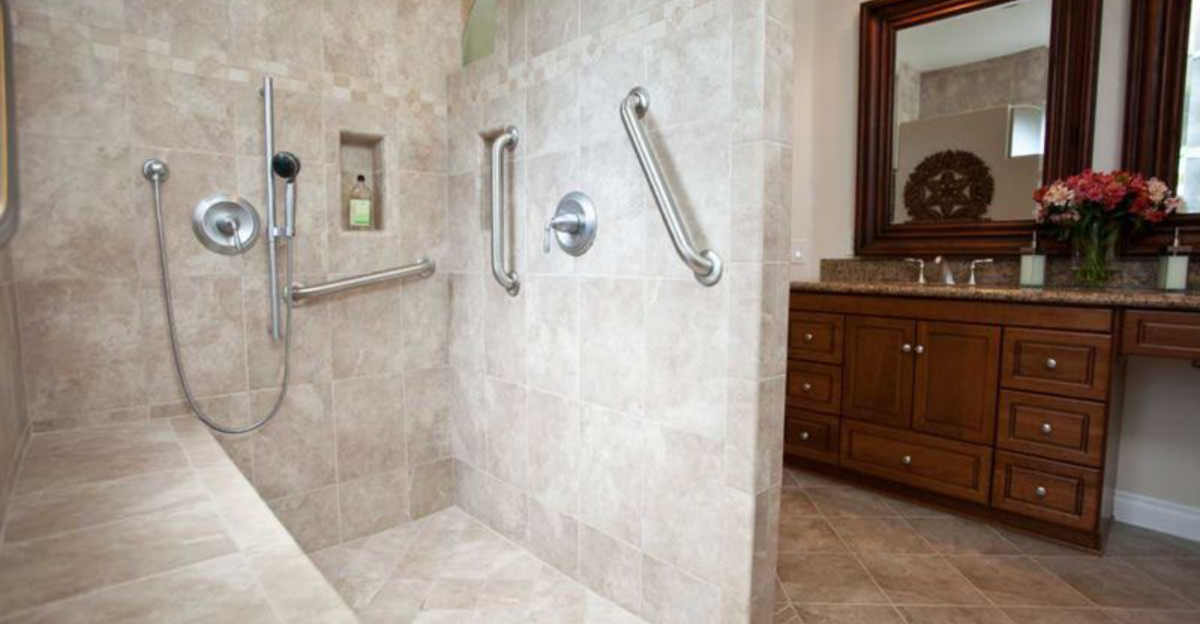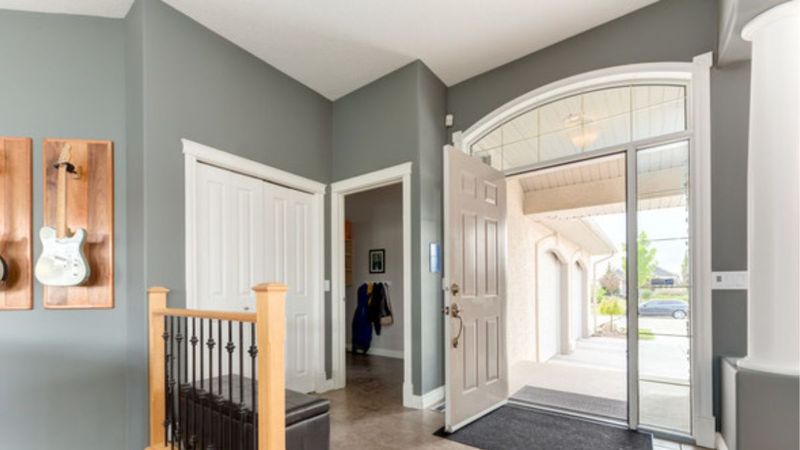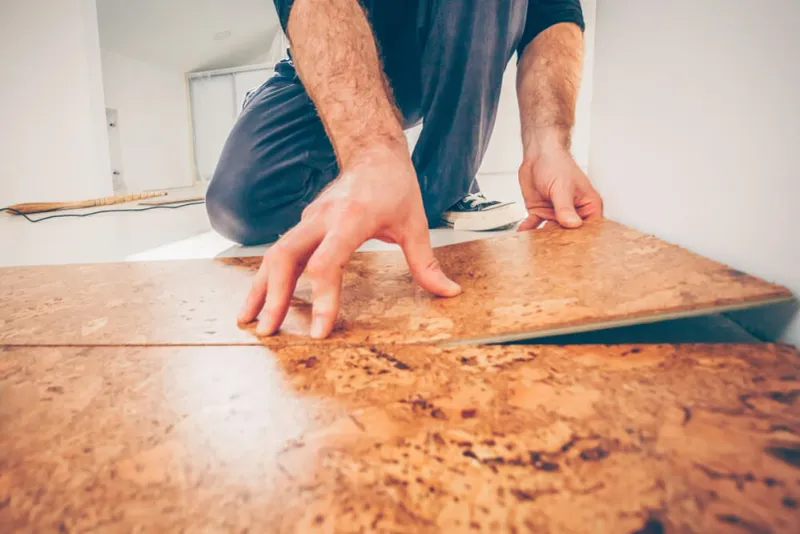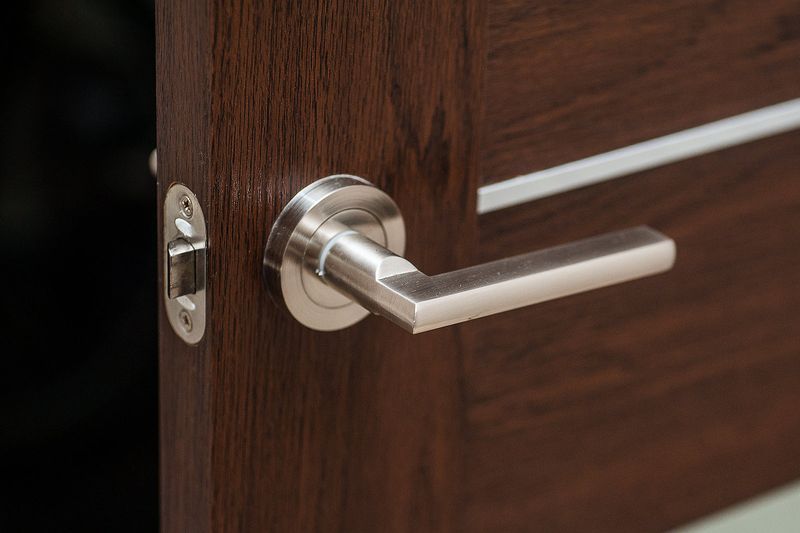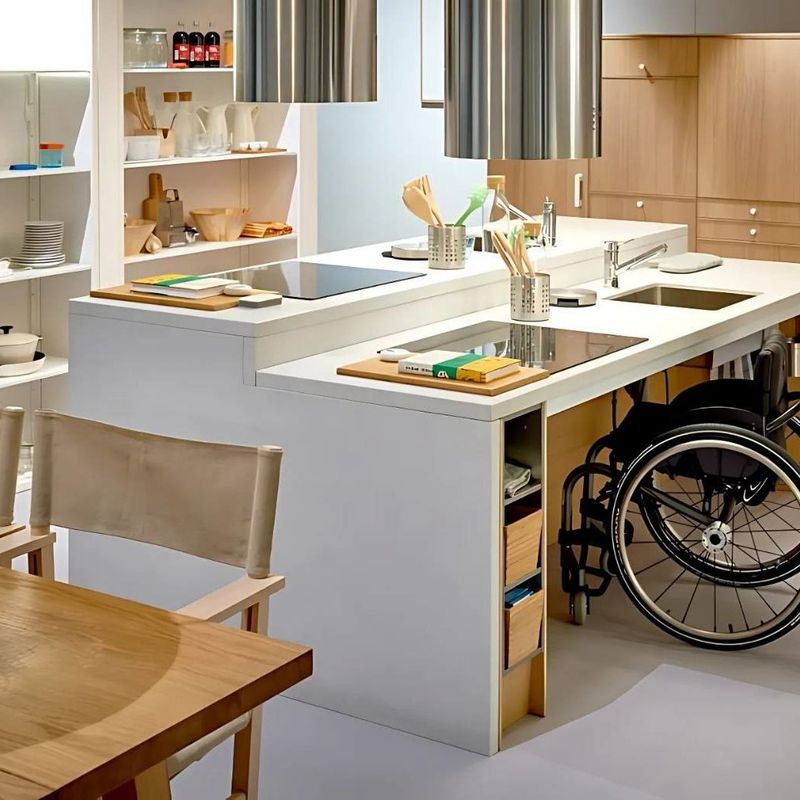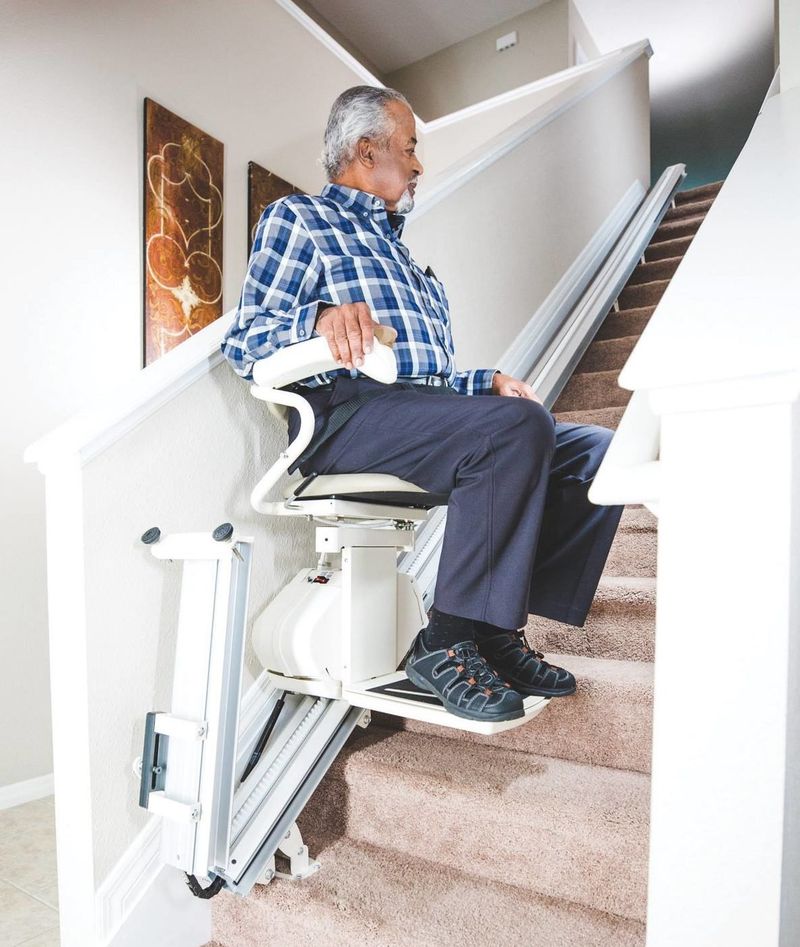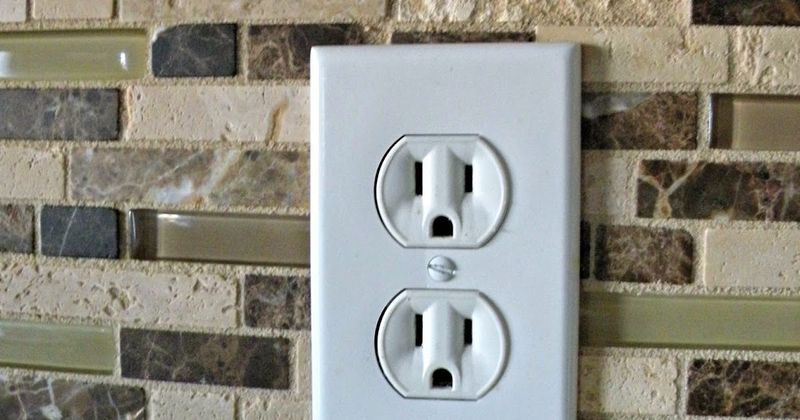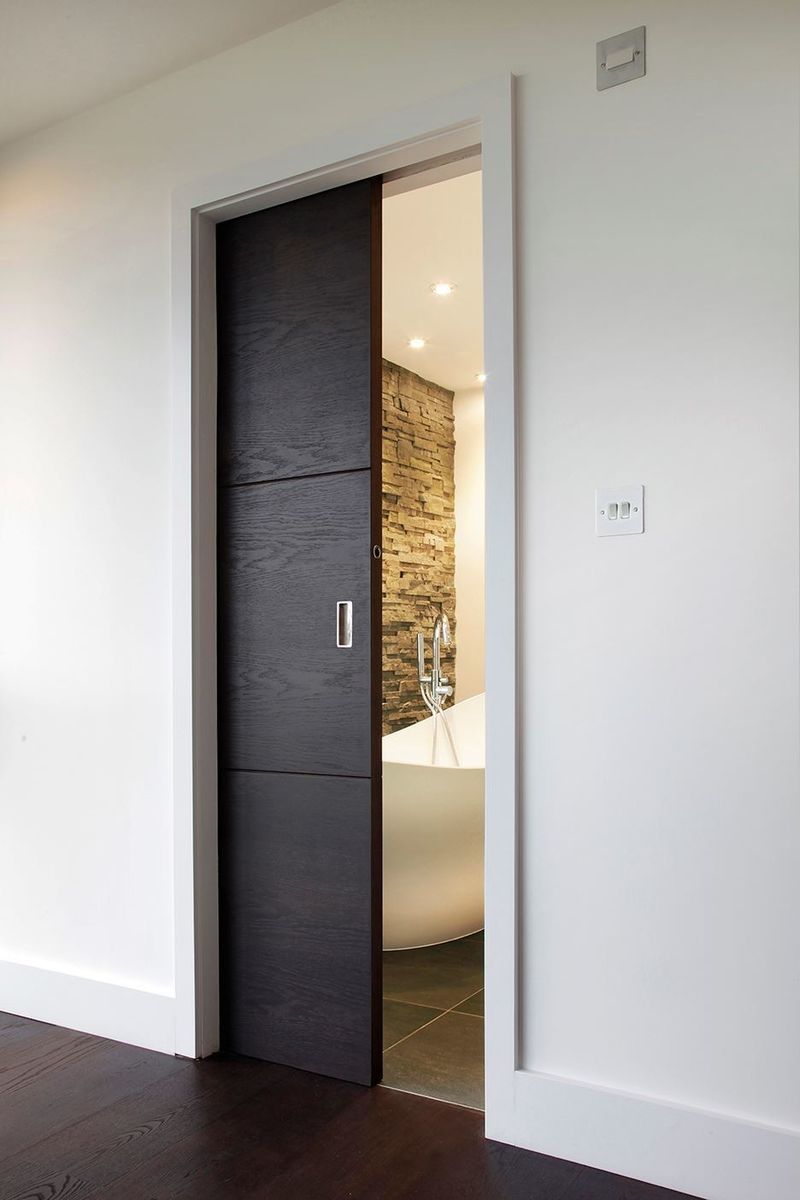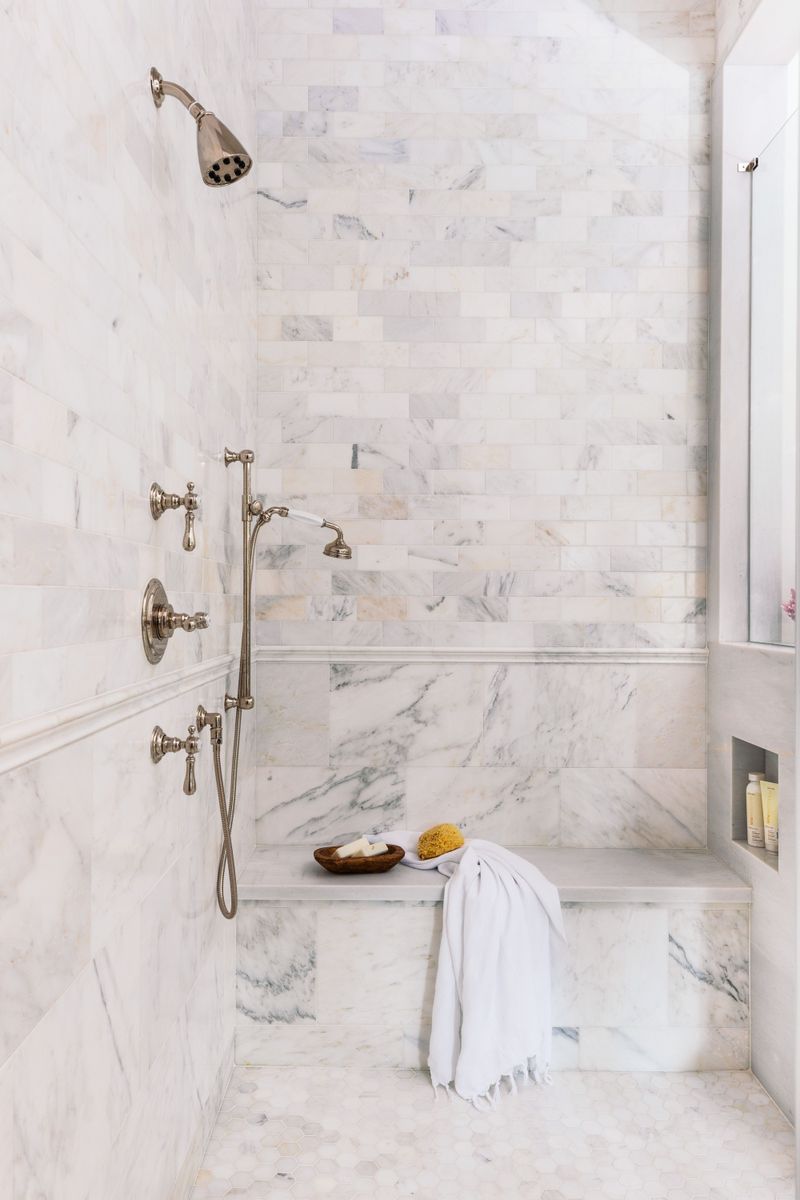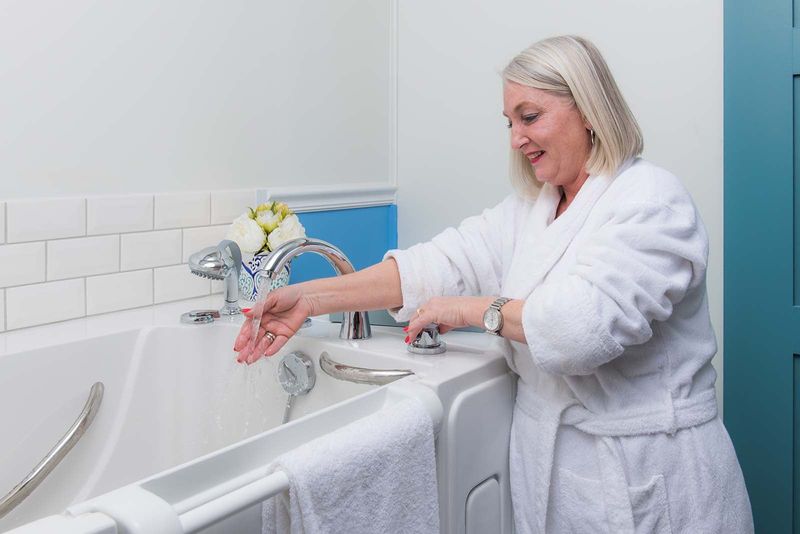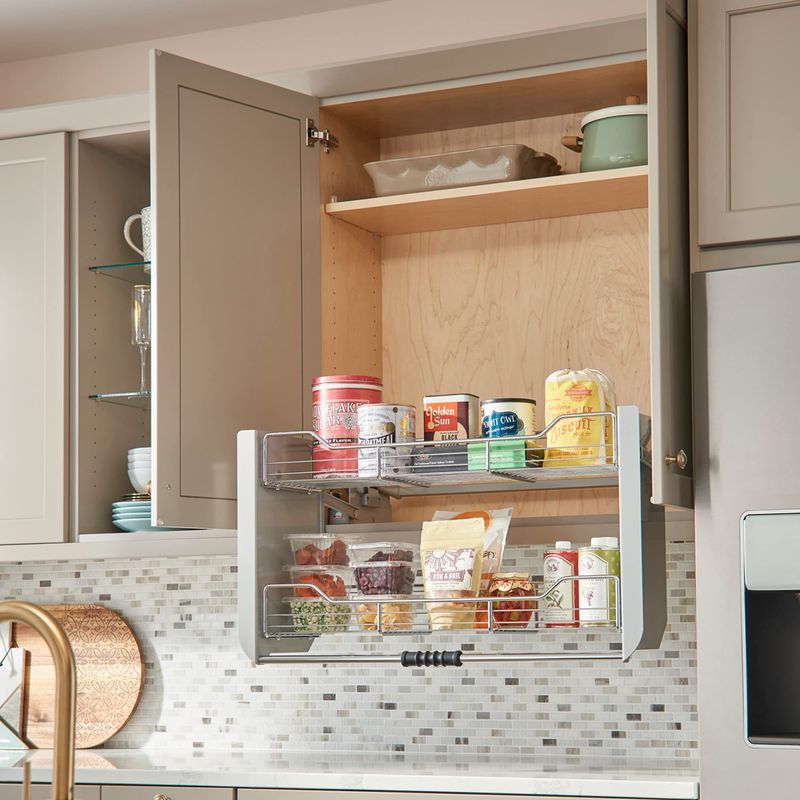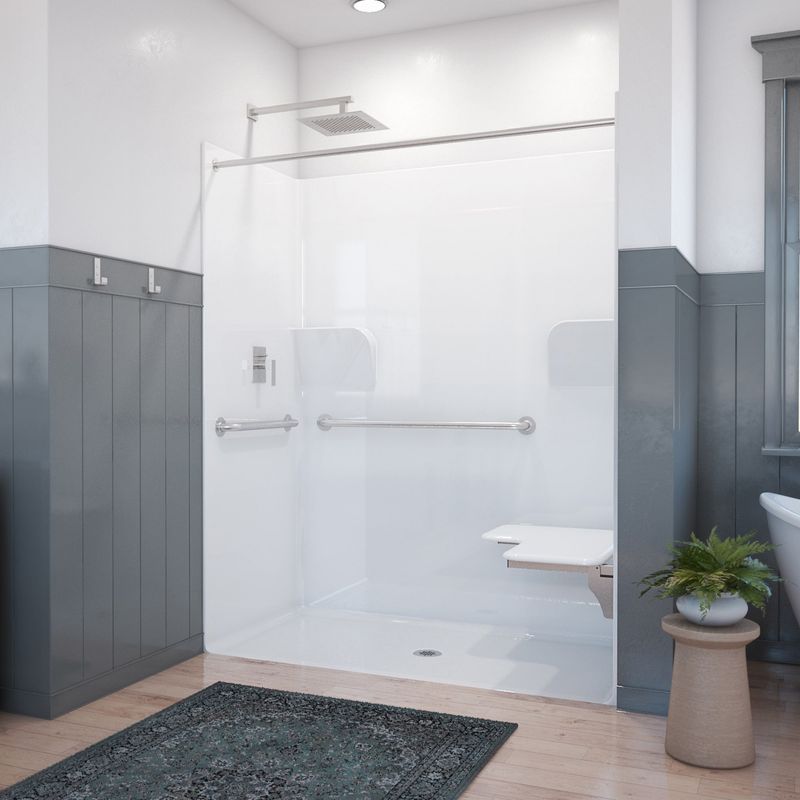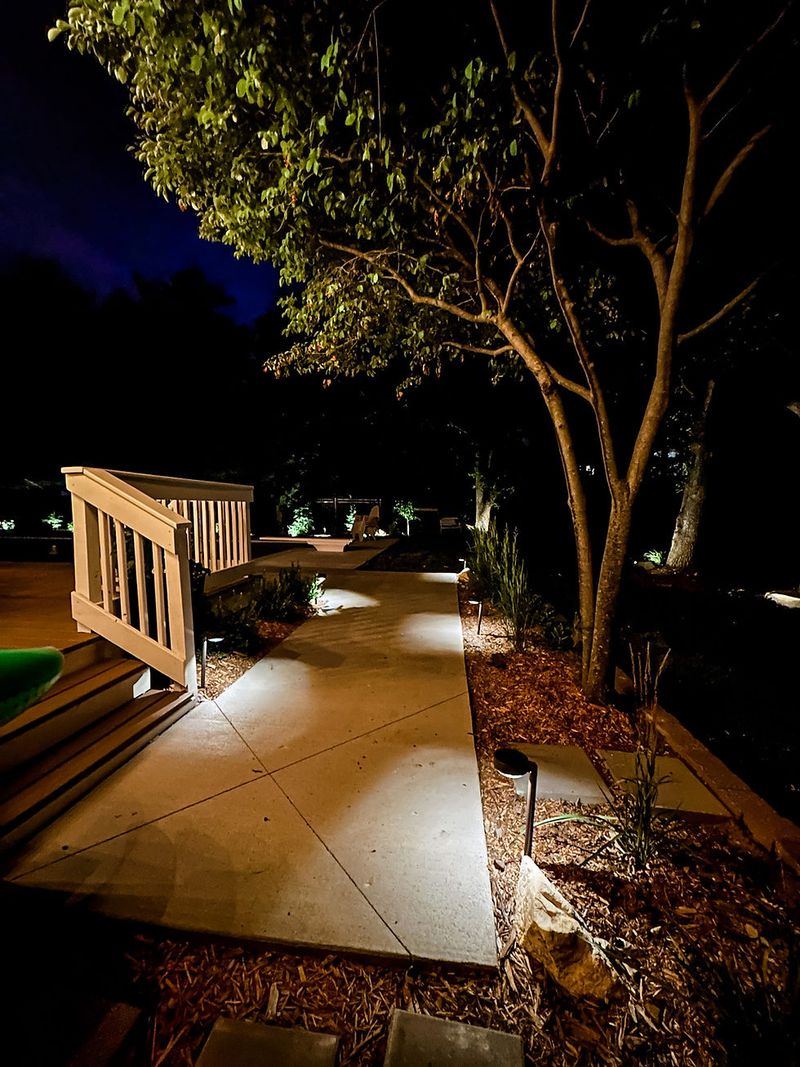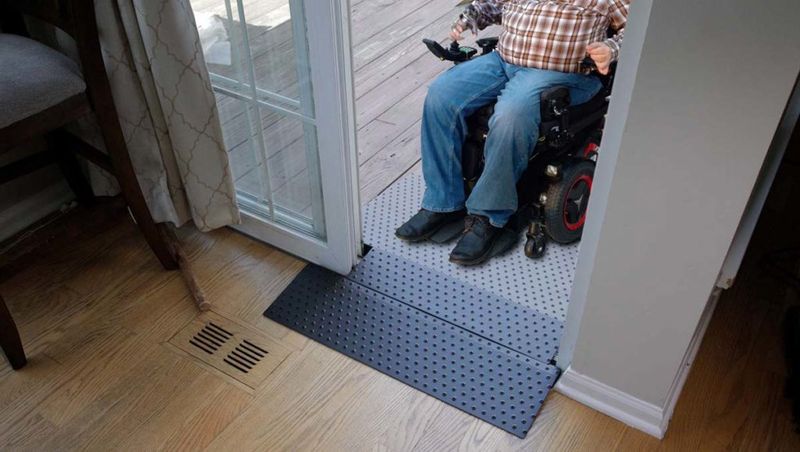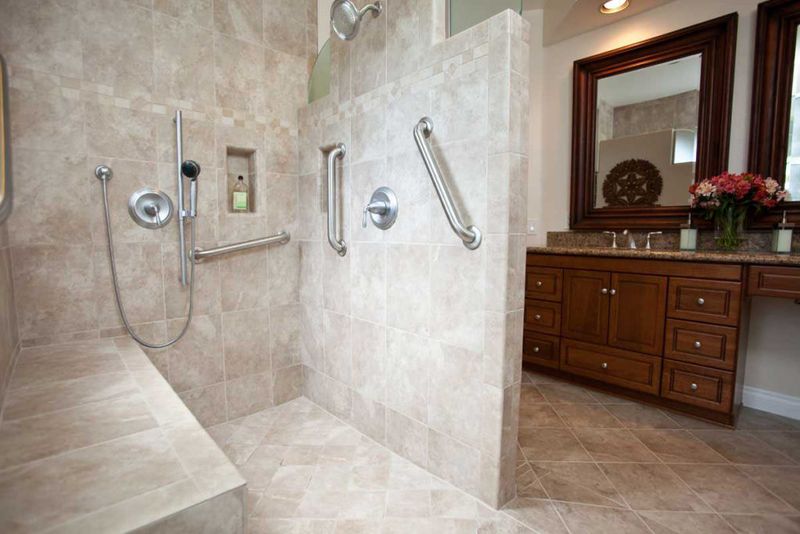Retirement should be a time to enjoy life’s comforts – not struggle with a home that no longer fits your needs.
The right upgrades can make daily routines easier, enhance safety, and create a more enjoyable living environment.
These smart changes help retirees stay independent and comfortable in their homes for years to come. Ready to make your home work better for you?
1. Widen Doorways for Better Access
Those narrow doorframes that never bothered you before might become real obstacles when mobility changes. Standard doorways often can’t accommodate walkers or wheelchairs comfortably.
Widening key doorways to at least 36 inches creates smooth passage throughout your home. The bathroom and bedroom entrances should be your top priorities since these are spaces you’ll need to access regardless of mobility challenges.
2. Switch to Non-Slip Flooring
Forget those slick ceramic tiles that transform into skating rinks when slightly damp! A single fall can lead to serious injuries that compromise your independence.
Textured vinyl, cork, or rubber flooring provides reliable traction even when wet. Many modern options mimic the appearance of hardwood or stone while offering superior safety features. Focus first on bathrooms and kitchens where water spills are common.
3. Replace Knobs with Lever-Style Handles
When arthritis flares up, those round doorknobs might as well be puzzles requiring two good hands and perfect grip strength. Why struggle with something so easily fixed?
Lever-style handles allow you to open doors with your elbow or wrist when hands are full or painful. This simple swap dramatically improves accessibility throughout your home. The same principle applies to faucets—lever or touch-activated styles eliminate unnecessary twisting motions.
4. Adjust Kitchen Counter Heights
Hours of food prep at standard-height counters can wreak havoc on aging backs. Many retirees find themselves cooking less simply because the process becomes uncomfortable.
Creating varied counter heights allows both standing and seated food preparation. Consider installing a section at 30 inches high—perfect for working while seated on a standard chair or stool. Electric adjustable counters offer flexibility but cost significantly more than fixed-height solutions.
5. Upgrade to Motion-Sensor Lighting
Fumbling for light switches in the dark creates unnecessary fall risks. Vision changes as we age make good lighting even more crucial for safety.
Motion-activated lights eliminate the need to search for switches, automatically illuminating your path when you enter a room or hallway. Focus on stairways, bathrooms, and the path from bedroom to bathroom—areas often traversed during nighttime hours.
6. Consider a Stairlift Installation
Staircases that once seemed perfectly manageable can become daily mountains to climb. Many seniors eventually relocate to single-level homes solely because of troublesome stairs.
A quality stairlift transforms multi-level living into an accessible option again. Modern models fold away when not in use, preserving stairway space for other household members. For homes with straight staircases, installation costs are surprisingly reasonable compared to moving expenses.
7. Raise Electrical Outlets
Bending down to plug in appliances becomes increasingly difficult with age. Traditional outlet placements often require uncomfortable stooping or kneeling.
Raising outlets to 24-27 inches above the floor eliminates unnecessary bending. This modification works best when combined with accessible switches installed at 48 inches or lower. For existing outlets, consider quality extension cords with on/off switches mounted at accessible heights.
8. Replace Swinging Doors with Pocket Doors
Conventional swinging doors consume valuable floor space and can be challenging to navigate with mobility aids. The door swing radius often creates awkward movements in tight spaces like bathrooms.
Pocket doors slide neatly into the wall when open, maximizing usable space. This improvement is particularly valuable in bathrooms and tight hallways. Choose doors with easy-grip handles and smooth-rolling hardware to ensure they remain practical as dexterity changes.
9. Add a Permanent Shower Seat
Standing throughout a shower becomes increasingly tiring and potentially dangerous with age. Portable shower chairs often look institutional and can be unstable on wet surfaces.
Built-in shower benches provide secure seating while maintaining a stylish appearance. Teak or stone options offer waterproof durability with elegant aesthetics. Position the bench within easy reach of shower controls and include a handheld showerhead nearby for maximum convenience.
10. Install Anti-Scald Devices
Aging skin becomes more sensitive to temperature extremes, increasing burn risks. Decreased reaction time can make adjusting water temperature challenging during sudden temperature fluctuations.
Thermostatic mixing valves maintain consistent water temperature regardless of pressure changes elsewhere in your plumbing system. These devices can be installed at individual fixtures or at the water heater itself.
1. Install Easy-Reach Storage Solutions
Stretching for items on high shelves or bending for low cabinets increases fall risks and daily frustration. Traditional storage often places frequently used items in the least accessible locations.
Pull-down shelving systems bring upper cabinet contents within comfortable reach. Similarly, pull-out drawers eliminate deep bending for lower storage access. Prioritize the kitchen and bathroom where daily necessities are stored and accessed most frequently.
2. Switch to Low-Pile Carpet or Hard Flooring
Thick, plush carpeting might feel luxurious underfoot, but it creates significant mobility challenges. Walkers, wheelchairs, and even shuffling feet can catch on high-pile surfaces.
Low-pile carpet or hard flooring provides a stable surface for mobility devices while reducing trip hazards. If you prefer some softness underfoot, consider area rugs with non-slip backing over hard flooring. Just ensure edges are secured and don’t create new tripping points.
3. Convert to Walk-In Shower
Climbing over a tall tub wall becomes increasingly challenging and dangerous as mobility decreases. Many seniors report bathroom falls as their biggest safety concern.
A zero-entry shower eliminates the hazardous step-over motion completely. Adding a built-in bench, handheld showerhead, and non-slip flooring creates the ultimate accessible bathing space. Some designs even include enough room for a shower chair if needed in the future.
4. Enhance Outdoor Lighting
Navigating your property after sunset shouldn’t feel like a dangerous adventure. Poor visibility significantly increases fall risks and security concerns.
Strategic pathway lighting illuminates potential tripping hazards while deterring unwanted visitors. Solar-powered options eliminate the need for complex wiring while reducing energy costs. Focus on entryways, garden paths, and steps—anywhere you might need to walk after dark.
5. Create Zero-Threshold Entries
Even minimal lips or thresholds between rooms can become significant tripping hazards or wheelchair barriers. These small elevation changes often go unnoticed until they cause problems.
Eliminating thresholds creates seamless transitions between spaces. This modification typically involves adjusting flooring heights and using special transition strips. Focus on bathroom entrances and exterior doorways where thresholds are traditionally highest.
6. Install Strategic Grab Bars
Reaching out for stability in slippery areas shouldn’t mean grabbing towel racks that weren’t designed to support your weight. Many accidents happen when we need something to hold onto but nothing secure is available.
Professional-grade grab bars installed near toilets, inside showers, and along hallways provide crucial support. Look for textured options that offer better grip even when hands are wet or soapy.

